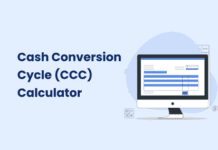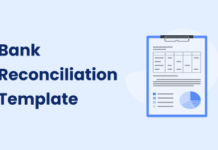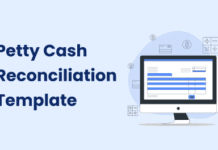Managing employee expenses can be a challenging task, especially for growing businesses. An effective expense reimbursement policy can help streamline this process, ensuring employees are reimbursed in a timely, fair, and transparent manner.
In this blog, we’ll discuss what an expense reimbursement policy is, why it’s important, and how to implement it successfully.
What is an Expense Reimbursement Policy?
An expense reimbursement policy is a formal set of rules and guidelines that outlines which work-related expenses employees can claim back, how they should submit those claims, and how the company will handle them. The policy typically covers travel, meals, accommodation, office supplies, and other costs incurred while performing job-related tasks.
It ensures employees are fairly compensated for money spent on business activities and helps maintain consistency across the company.
Why is an Expense Reimbursement Policy Important?
Having a well-defined expense reimbursement policy is crucial for several reasons:
- Provide Clarity: Without clear rules, employees might be uncertain about which expenses are eligible for reimbursement, leading to misunderstandings.
- Promotes Fairness: A good policy ensures that every employee, regardless of department or seniority, is treated fairly when submitting expenses.
- Ensures Compliance: It helps the company adhere to tax laws and avoid penalties related to incorrect handling of expenses.
- Improves Financial Control: By setting limits on expense categories and requiring proper documentation, a reimbursement policy can help the company keep better control over its spending.
- Boosts Employee Satisfaction: Employees who feel that their expenses are reimbursed quickly and fairly are more likely to be satisfied and productive.
Key Elements of an Expense Reimbursement Policy
When creating or updating an expense reimbursement policy, it’s essential to cover the following areas:
Eligible Expenses:
This section outlines the types of expenses employees can claim. Common categories include:
- Travel Costs: Flights, trains, taxis, mileage for personal vehicles, etc.
- Meals and Entertainment: Meals while traveling or entertaining clients.
- Accommodation: Hotel stays for business trips.
- Office Supplies: Items necessary for job performance, such as stationery, equipment, or software.
Be specific about what qualifies as a reimbursable expense. For instance, some companies allow employees to claim public transportation, while others may restrict this to long-distance travel only.
Non-Reimbursable Expenses:
Just as important is defining what won’t be covered. These could include:
- Personal items purchased during a business trip.
- Fines (e.g., parking tickets).
- Luxury upgrades (e.g., first-class flights when not explicitly approved).
- Alcohol, unless consumed in a business meeting or event.
Clear guidelines prevent any misunderstandings and ensure the policy is respected.
Submission Process:
Outline the steps for submitting expense claims. This typically involves:
- Documentation: Require employees to provide receipts or proof of payment.
- Timing: Specify how long employees have to submit claims after incurring the expense (e.g., within 30 days).
- Approval: Define who needs to approve expense claims (e.g., direct managers or finance team).
Many companies use expense management software that allows employees to submit claims digitally, speeding up the process.
Expense Limits:
To maintain financial control, it’s important to set limits for certain types of expenses. For example:
- Daily meal allowance: Specify the maximum amount that employees can claim for food each day.
- Accommodation: Define a price range for hotel bookings based on location and duration of stay.
- Travel class: Indicate whether employees can fly business or economy class depending on the length of the trip.
Having these limits prevents excessive spending and ensures company resources are used wisely.
Payment Methods:
Clarify how employees should pay for expenses. Some companies provide employees with a company credit card, while others ask employees to use personal funds and submit for reimbursement later.
Review and Approval:
The policy should describe the steps required for reviewing and approving expenses. This typically involves:
- Reviewing the expense to ensure it complies with the company’s policy.
- Verifying that proper documentation (e.g., receipts) has been provided.
- Approving the expense for reimbursement.
Reimbursement Timeline:
Employees want to know how quickly they will be reimbursed. Set expectations for when they can expect payments after submitting their claims (e.g., within 10 business days after approval). Faster reimbursement improves employee satisfaction and helps them manage personal cash flow.
Consequences of Policy Violations:
Clearly state the consequences if employees fail to comply with the expense reimbursement policy. This could include:
- Delay or rejection of reimbursement claims.
- Disciplinary action for repeated violations.
This section ensures employees take the policy seriously and follow it consistently.
Best Practices for Expense Reimbursement Policy
1. Be Clear About the Process
Make sure your expense policy clearly explains how employees should submit their expense reports and how they will be reimbursed. This helps employees understand the process better and ensures they get their money back quickly.
2. Set Rules and Responsibilities
Define clear guidelines on how much employees can spend and what they can spend it on. Also, outline who is responsible for approving expenses and managing the reimbursement process.
3. Update the Policy Regularly
Businesses and regulations change over time, so it’s important to keep your expense policy up-to-date. Review and update the policy regularly to ensure it meets current needs and complies with any new guidelines.
4. Use Expense Management Software
Implement automated expense reporting software to track and manage travel and expense claims. This will give you better visibility into spending, help you understand spending patterns, and improve accountability within your organization.
How Automation Transforms Expense Reimbursement?
Automating the expense reimbursement process can address many of the challenges associated with manual methods.
Creating and managing an effective expense policy is essential for organizations to stay compliant, control costs, and simplify financial processes. Peakflo’s Travel and Expense Management Solution provides an easy-to-use platform to help with this.
With Peakflo, businesses can quickly create and update their expense policies to match their needs. Here’s how the solution simplifies policy management:
- Effortlessly manage expense categories to provide a structured approach for recording and tracking company expenses.
- Easily define guidelines for fuel and mileage reimbursements.
- Optimize per diem expense policy by dynamically defining rates based on business travel duration, location, and expense categories.
- Automate and customize approval policies and automatically route them to stakeholders to avoid delays.
- Assign policy admins to create, edit, and view expense policy details.
Closing Thoughts
Automating your expense reimbursement policy offers numerous benefits, including time savings, reduced errors, enhanced compliance, improved visibility, and faster reimbursements. By leveraging advanced features such as receipt scanning, policy compliance checks, and mobile accessibility, you can streamline your expense management process and create a more efficient workflow.
With careful planning and implementation, automation can transform your expense management process, providing greater efficiency and satisfaction for both employees and finance teams.









![Why AI Sales Calls Are Making Good Sales Reps Even Better [2025 Guide] ai sales calls](https://cdn-kmjmp.nitrocdn.com/YvtqmrsiHUxqerlSiZgbfzqqTARWTElr/assets/images/optimized/rev-834053b/blog.peakflo.co/wp-content/uploads/2025/09/65168cf6-3001-4733-8cbc-12d5684cf449-218x150.webp)

































